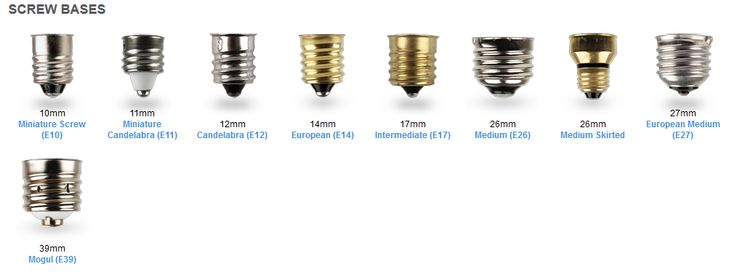Socket Size Chart

Socket size chart
Six Point Standard Sockets (3/8, 7/16, 1/2, 9/16, 5/8, 11/16, 3/4, 13/16, 7/8, 15/16, 1)
How do I know my socket size?
The size of the drive hole is determined by usage and torque demand. Common measurements are as follows: 1/4”(6.3mm), 3/8”(9.5mm), 1/2”(12.7mm), 3/4”(19.0mm) and 1”(25.4mm)。
What are the 4 socket sizes?
There are four common socket sizes: 1/4 inch (0.6 centimeters), 3/8 inch (0.9 centimeters), 1/2 inch (1.3 centimeters) and 3/4 inch (1.9 centimeters).
What are the 3 socket sizes?
Socket Drive Sizes Metric and Standard (SAE) sockets come in three available drive sizes: 1/4 inch, 3/8 inch, and 1/2 inch. The measurement refers to the size of the square used to attach the to socket to a wrench or a ratchet.
Are 3/4 and 19mm the same?
19mm = 3/4 inch. 20mm = 25/32 inch. 21mm = just over 13/16 inch. 22mm = almost 7/8 inch.
What are the 3 common sizes of ratchets?
Available with different drive sizes — 1/4 inch, 1/2 inch and 3/8 inch — to operate different size sockets. Most operate with a geared drive; those with a higher tooth count let you operate the tool with a smaller swinging motion, which is useful when there's little room to move the handle.
What are the 3 types of sockets?
Three types of sockets are supported:
- Stream sockets allow processes to communicate using TCP. A stream socket provides bidirectional, reliable, sequenced, and unduplicated flow of data with no record boundaries.
- Datagram sockets allow processes to use UDP to communicate. ...
- Raw sockets provide access to ICMP.
Whats bigger 3/8 or 1/4 socket?
3/8 is expressed as 0.375 as a decimal and 1/4 is expressed as 0.25 in its decimal form. It is clear that the value of 3/8 is more than 1/4. Hence, it is bigger.
What does AF mean in sockets?
AF Sockets The abbreviation AF means Across Flat (American), this roughly means "measured crosswise" the sockets fit UNF and UNC threads. If the caliper indicates 9/16 "(14.2mm) when measuring the head, you should use a 9/16" socket. So the size of the head is decisive. We sell standard and deep socket sets.
What is difference between metric and SAE?
SAE sockets are sized in inches and fractions of inches. Metric and SAE wrenches have different systems of measurement. Metric sockets and wrenches use the metric measurement system. This is when millimeters are used to describe the size.
What size is a 15mm socket?
| 3/8″ Drive | 1/4″ Drive | 1/2″ Drive |
|---|---|---|
| 11mm | 8mm | 14mm |
| 12mm | 9mm | 15mm |
| 13mm | 10mm | 16mm |
| 14mm | 11mm | 17mm |
What does SAE stand for in tools?
SAE, or standard, is used on most domestic models, while metric applies to foreign or non-domestic vehicles. Socket sets and wrench sets are among the most used tools in cases where size measuring differences are important. Notably, SAE tools are measured in fractions of inches, from 5/32 to 2 ½ inches.
Do I need a 1/2 ratchet?
1/2 ratchets are great for doing suspension and exhaust work but honestly not needed. You can get by with a 1/2 breaker bar and a good assortment of 3/8 sockets. I rarely use my 1/2 ratchet. I get a lot of use out of mine.
How do I choose a socket set?
When selecting a socket set, you should think about where you will be using it as well as what it must include. Instead, try to buy the socket set that will expand your tool collection in the best way, and concentrate on the size range of sockets included, both standard and deep lengths, in metric and imperial sizes.
What is metric socket sizes?
Metric sockets: Ideal for working on imported vehicles, metric sockets' sizes are measured in millimeters. The most commonly used types are 8 mm, 10 mm and 14 mm sockets.
Can I use a 3/4 socket instead of a 19mm?
No, there's no need to get a 19mm socket, and it will present no difference in performance just because the number on the side is different.
What is a 3/4 wrench in metric?
3/4" 29mm. 1-1/8" 32mm. 1-1/4"
What is 18mm in standard?
| SAE | Metric | Inch |
|---|---|---|
| 18mm | 0.709 | |
| 23/32" | 0.719 | |
| 19mm | 0.748 | |
| 3/4" | 0.75 |
What are the 4 different types of sockets?
However, some of the commonest options you would find are 36mm sockets and 10mm sockets. Considering the standard sockets, you can find four common types, and they include 3/4 –inch, ½-inch, 3/8-inch, and ¼-inch sockets. Most of these options mentioned above come with bits that would fit Torx screws.
What are 1/4 ratchets used for?
A 1/4-inch ratchet is best for smaller sockets and precision work. The most versatile ratchet is the 3/8-inch size. This ratchet size can accommodate sockets of all sizes. It is big enough to apply a lot of force, but it can still fit into tight spaces.













Post a Comment for "Socket Size Chart"